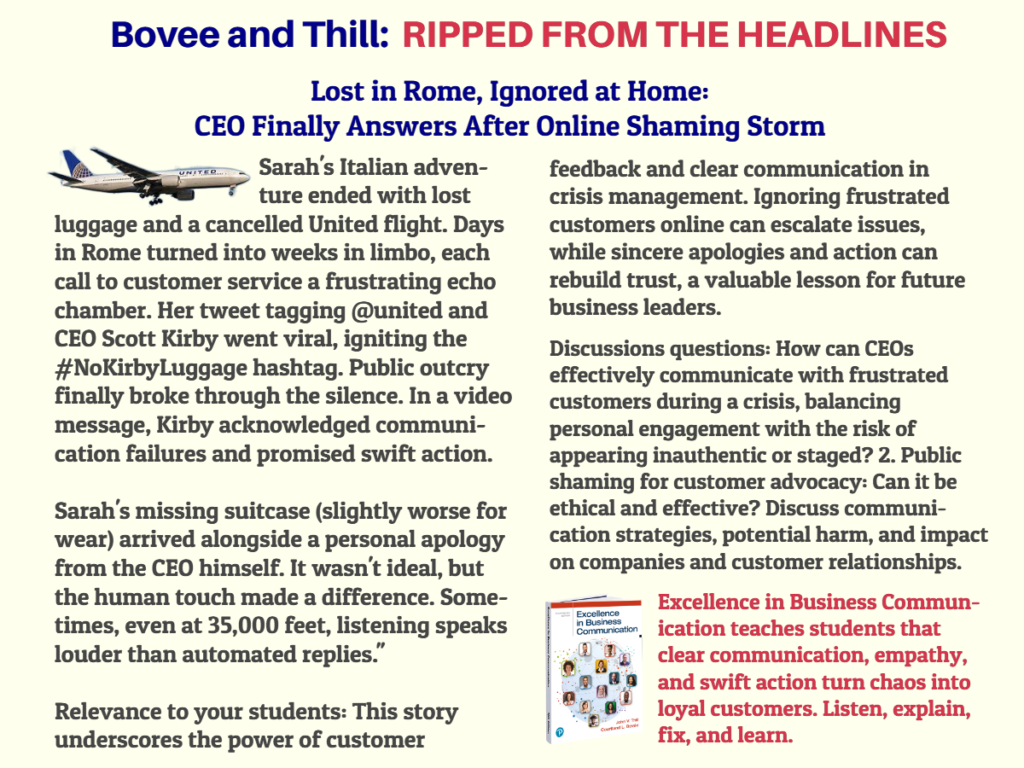 ANSWERS TO DISCUSSION QUESTIONS
ANSWERS TO DISCUSSION QUESTIONS
1. How can CEOs effectively communicate with frustrated customers during a crisis, balancing personal engagement with the risk of appearing inauthentic or staged?
Balancing act: CEOs need to find a middle ground between:
Authentic empathy: Showing genuine understanding and concern for the customer's situation.
Transparency and accountability: Acknowledging mistakes and outlining concrete steps to resolve the issue.
Maintaining professionalism: Avoiding excessive drama or apologies that sound scripted.
Effective strategies:
Respond promptly and publicly: Acknowledge the issue on social media or relevant platforms where the customer raised it.
Express genuine empathy: Use sincere language that validates the customer's frustration.
Offer specific solutions: Explain what is being done to address the issue and provide a timeline for resolution.
Be transparent: Share details without making excuses or blaming others.
Listen and engage: Encourage further communication and answer questions openly.
Personalize the response: If appropriate, a personal apology from the CEO can demonstrate commitment.
Avoiding inauthenticity:
Be consistent with past actions: Actions must match words to avoid appearing disingenuous.
Avoid scripted language: Use genuine and personalized language.
Focus on solutions, not excuses: Don't blame external factors or deflect responsibility.
Stay professional: Avoid emotional outbursts or unprofessional language.
2. Public shaming for customer advocacy: Can it be ethical and effective? Discuss communication strategies, potential harm, and impact on companies and customer relationships.
Ethical considerations:
Proportionality: The severity of the shaming should be proportional to the offense.
Targeting: Aim criticism at the responsible party, not innocent individuals.
Accuracy: Ensure information shared is accurate and verifiable.
Intent: Avoid personal attacks and focus on constructive criticism.
Potential harm:
Reputational damage to company and individuals: Can go beyond the specific issue and harm innocent employees.
Escalation of conflict: Can create hostility and make resolution more difficult.
Unintended consequences: May impact other customers and employees negatively.
Effective communication strategies:
Focus on facts and evidence: Present a clear and factual account of the issue.
Direct criticism responsibly: Target the relevant parties and avoid personal attacks.
Seek constructive solutions: Propose solutions and engage in dialogue with the company.
Maintain respectful communication: Avoid inflammatory language and harassment.
Impact on companies and customer relationships:
Can pressure companies to take action: Public shaming can be a powerful tool for change.
Can damage customer trust: If mishandled, it can alienate customers and harm relationships.
Can create fear and silence: Fear of public shaming can deter legitimate customer complaints.
Overall, public shaming can be a double-edged sword. It can be effective in driving change, but it's crucial to consider the ethical implications, potential harm, and responsible communication strategies before resorting to it.
Remember, the goal is to achieve a fair and just resolution, not simply inflict harm. Encourage students to consider alternative approaches like direct communication, formal complaints, or seeking media attention through ethical channels before resorting to public shaming.